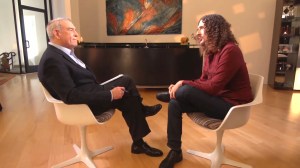Musician Adam Neely explains Chechnya‘s strange ban on music that is either too fast (above 116 beats per minute) or too slow (below 80 bpm) and how it affects traditional music from the region. While this was passed to encourage music from Chechnya and discourage music from elsewhere, in also inadvertently included both the Russian and Chechen national anthems, other official comminiqués, and music for several traditional Chechen dances.
Chechnya has recently banned all music slower than 80 beats per minute and faster than 116 beats per minute. …Now, this might be a little embarrassing for the Chechnyan Cultural Minister, because the official recording of …Chechnya’s own national anthem is also slower than this at 78 beats per minute, … and the music that can be found on the official announcement video declaring this policy on Chechnya’s Cultural Ministry’s Telegram, that music is also slower. It’s also at 78 beats per minute.
Neely spoke with Leigh VanHandel, an associate professor of Music Theory and Music Cognition at the University of British Columbia, who explained how the traditional dance music falls outside this odd rule.
Yea once it regularizes, it’s there, before I was tapping double time, yeah. (When the) pulse becomes fast enough, it actually stops being the pulse, and it starts being a subdivision. It stops being that 1 2 3 4 1 2 3 4 and it becomes 1 and 2 and 3 and 4 and So there’s actually different levels of pulse salience that are going on, and the reason we talk about around 100 beats per minute as being that maximal pulse salience, is because that’s where it’s most comfortable for us.
In other words, a wonderful loophole that musicians can exploit.






